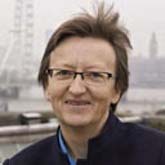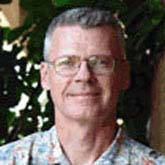Summary
An Urban Canopy Model (UCM) coupled with the Noah Land Surface Model (Noah/LSM) is under development at the National Center for Atmospheric Research (NCAR) for use with the next generation numerical weather prediction model, the Weather Research and Forecast Model (WRF), to improve model performance in urban areas for weather, climate and air quality applications. The WRF/Noah/UCM represents the geometry of urban land use/cover and includes urban specific processes in the surface-energy balance such as anthropogenic heating, radiation trapping, and heat storage in built surfaces.
This research is a collaborative study involving Arizona State University (ASU), King's College London (KCL, Great Britain) and NCAR to apply the WRF/Noah/UCM system to the Phoenix metropolitan area in order to enable the investigation of changes in weather due to the rapid urbanization of the region. First, the WRF/Noah/UCM model performance will be evaluated with comprehensive meteorological and energy flux data obtained from previous urban field experiments under varying climatological and weather conditions and urban architectures. Necessary model refinements will be identified and implemented into WRF. Then, for the Phoenix metropolitan area, the Principal Investigator will investigate if the increasing extent of the urban area affects the development and propagation of summer thunderstorms; how mesoscale circulations due to the variability in urban and rural land use interact with the mesoscale thermal circulations due to complex terrain; and how past and potential future land use changes influence near surface atmospheric state variables and characteristics of the planetary boundary layer.
The goal of the research is to gain a better understanding of meteorological processes potentially influenced by urbanization in the Phoenix metropolitan region. This work will improve the understanding of the development of summer monsoonal thunderstorms in central Arizona and how they are affected by their interaction with urban and terrain induced thermal circulations. Completion of this research will provide an advanced understanding and knowledge about the performance of the newly developed WRF/Noah/UCM under various weather and climate conditions and urban architectures.
Population and areal coverage of urban regions continue to increase worldwide. The study will contribute to a better understanding of the impact of such anthropogenic land-surface changes on weather, with specific results for the Phoenix metropolitan area. Such changes in weather affect human comfort and health. The weather forecast abilities for the region will be enhanced through an improved understanding of the effects of urbanization on thunderstorm development and propagation, as well as the assessment of effects of mesoscale circulations due to surface heterogeneity/patchiness and complex terrain. The study leads to an improvement of numerical weather prediction and climate modeling in urban areas in general by identifying necessary model refinements for the WRF/Noah/UCM that will be implemented into the operational/community research version of WRF in cooperation with NCAR.



 C. Susan Grimmond
C. Susan Grimmond
 Joseph Zehnder
Joseph Zehnder